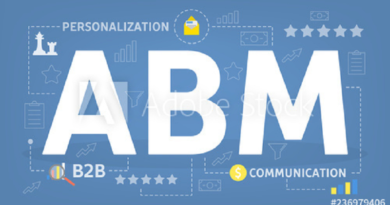4 ways to improve your cross-channel marketing
The right message at the right time can deeply engage consumers, improve their relationship with your brand, and lead to greater customer loyalty and lifetime value (CLV). But how do you leverage your cross-channel marketing to win and keep consumers’ attention against the onslaught of brand messaging? Ultimately, consumers want to be known by the brands they shop for, and you can fulfill their needs with the right technology.
Here are four ways to improve your cross-channel marketing engagement.
1. Use all your data
In Cordial’s recent customer engagement study, 81% of consumers agree that they are more likely to purchase from stores and brands that communicate with them in a personal and relevant way.
Marketers have a huge amount of data. But if they can’t access and activate it in real-time, then they can’t use it to send better messages. For a long time, data migration prevented marketers from simplifying their data experience. Many Martech options have extended delivery times and require IT resources that marketers simply don’t have. Most marketers’ technology limits their capabilities in many ways, including “old solutions” that don’t connect to a marketer’s entire arsenal of technology. Almost all (91%) marketers told Cordial that they wish it was easier to use real-time data for high-impact marketing campaigns. They also report that they have difficulty accessing and formatting data, preventing efficient data organization, activation, and interaction. The time and resources required to overcome these barriers with next-generation omnichannel marketing platforms have prevented many marketers from achieving their goals of personalization or meeting consumer expectations.
2. Create more automation to make your posts 30-50x more profitable
Brands today have smaller teams, higher gross margin pressure, and higher requirements from the CFO to prove the value of their marketing efforts.
Automation backed by a powerful customer database enables brands to ditch generic promotional messages and focus on hyper-personalized omnichannel marketing so their messages reach the right audience. image at the right time. The result is higher revenue per thousand messages (RPM), better customer experience, and increased CLV.
And according to McKinsey’s latest personalization research, consumers value targeted messages from brands. You can set behavioral triggers for almost anything with the right customer engagement platform. Start by incorporating triggers to add value to your customers and improve the shopping experience. Some common triggers include:
- New account welcome and onboarding.
- Cart abandonment and re-engagement.
- Back-in-stock alerts.
- Price-drop notifications on products they like.
- Loyalty rewards and opportunities.
- Birthday and holiday greetings.
Marketers who expand their use of triggers will see a 43% increase in average order value (AOV). But when marketers can’t access real-time data — or when that data can’t be easily transferred from any source to their cross-channel marketing platform — recommendations cannot be made, promotions or other personalized up-to-the-minute communications.
3. Improve your first-party data activation
Using first-party data that consumers share with your brand enhances personalization efforts while increasing your results. Consumers increasingly view their own data as currency. They know brands that have it and want to benefit from the data they share. Cordial found that 80% of consumers expect to receive relevant offers after sharing their data with marketers. And 7 out of 10 consumers say they’d be willing to provide more personal information to a brand if that data improves their shopping experience.
Brands make the most of first-party data when they use it strategically. Personalization efforts often lead to a 10-15% increase in revenue. However, organizations willing to put first-party data at the heart of decision-making saw revenue growth of nearly 25%.
4. Grow your channel
The value of personalized messages goes far beyond your email marketing strategy. Apps and SMS are increasingly becoming important channels for meaningful communication with consumers.
Consumers of all generations told Cordial that they shopped through apps more than a year ago, including using a retailer’s app when shopping in a physical store. And more than 75% of consumers say they’d rather shop on a brand’s mobile app than on a website.
Messaging is a huge opportunity to reach consumers:
83% of Millennials open a text message within 90 seconds of receiving it. But sending a generic or irrelevant message has significant consequences. Most consumers receive text messages from brands, but 75% told Cordial that brands do not personalize their messages, and 60% said the messages were not helpful or interesting. Additionally, about 30% of consumers will unsubscribe from branded messages after receiving two or three generic messages. Personalized messages deliver the promise of an experience rather than a simple transaction.
Marketers need streamlined technology
Improving engagement will require marketers to have better access, better activations, and better organize their data. When marketers can seamlessly and instantaneously use the data consumers freely share, they can send highly relevant communications across multiple channels, connecting with buyers at the right time. with the right message.




